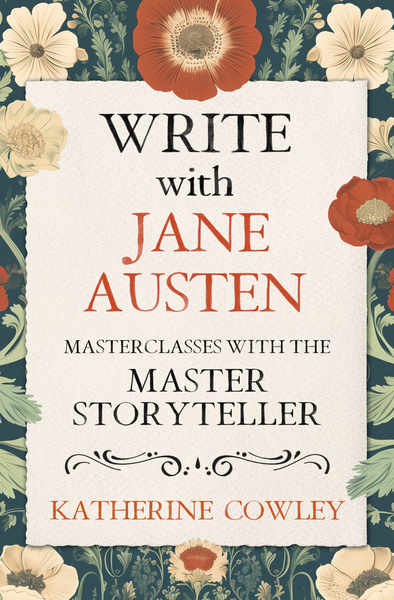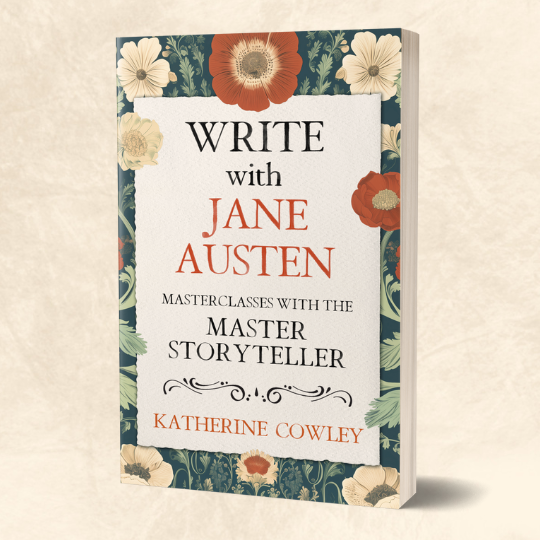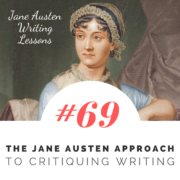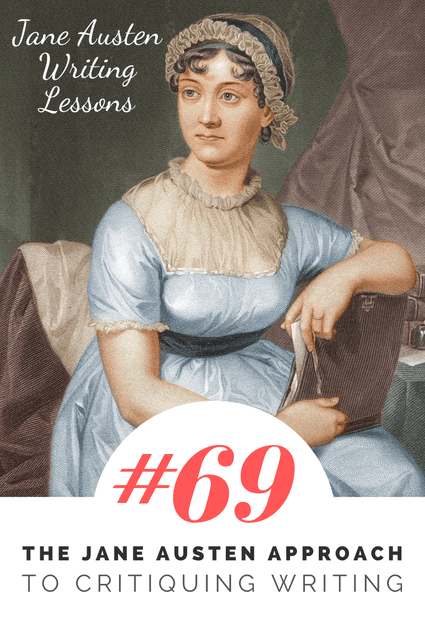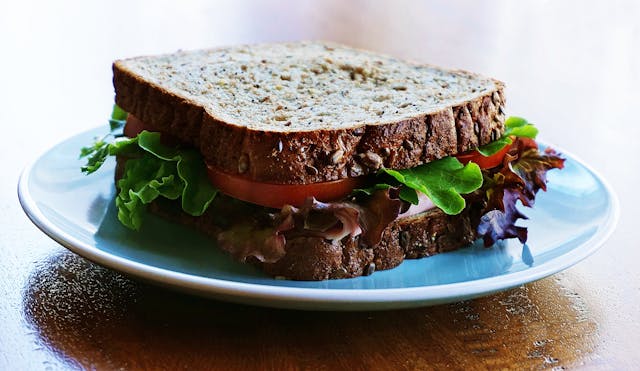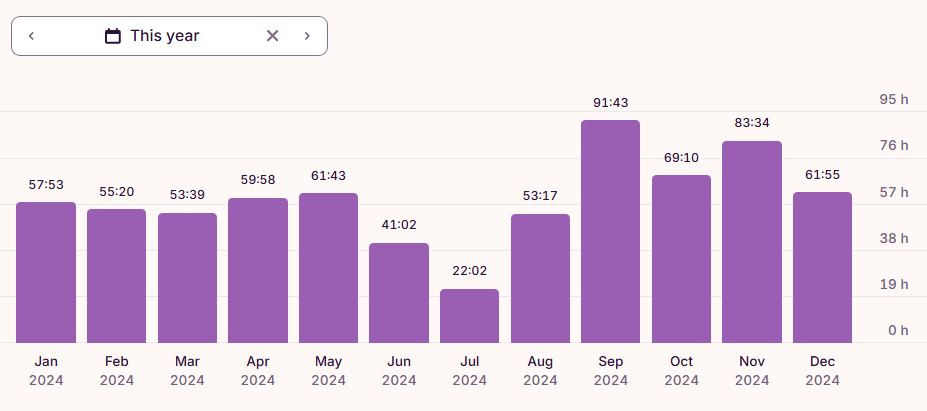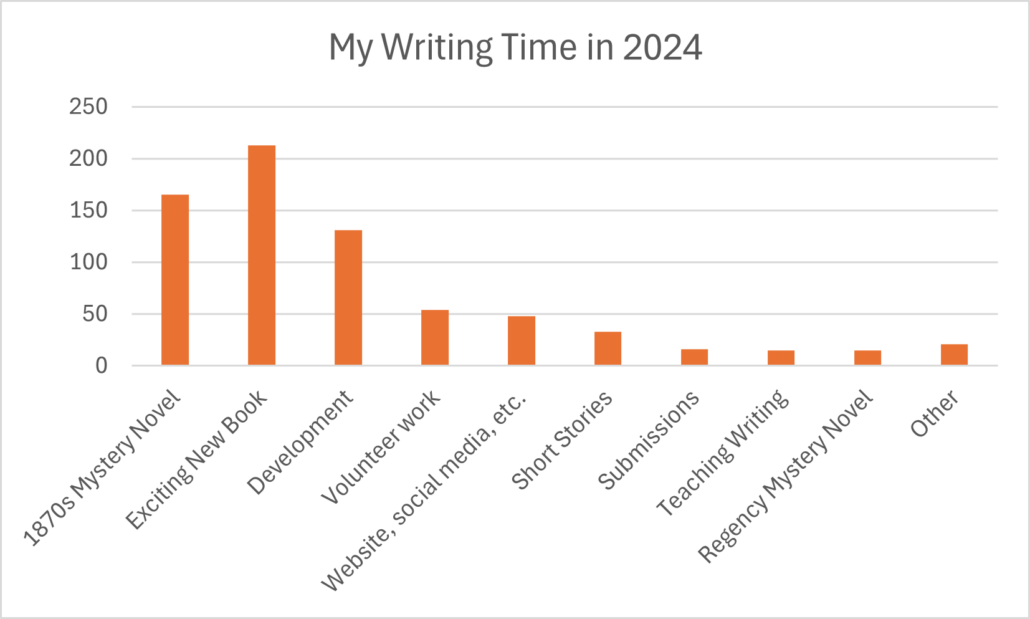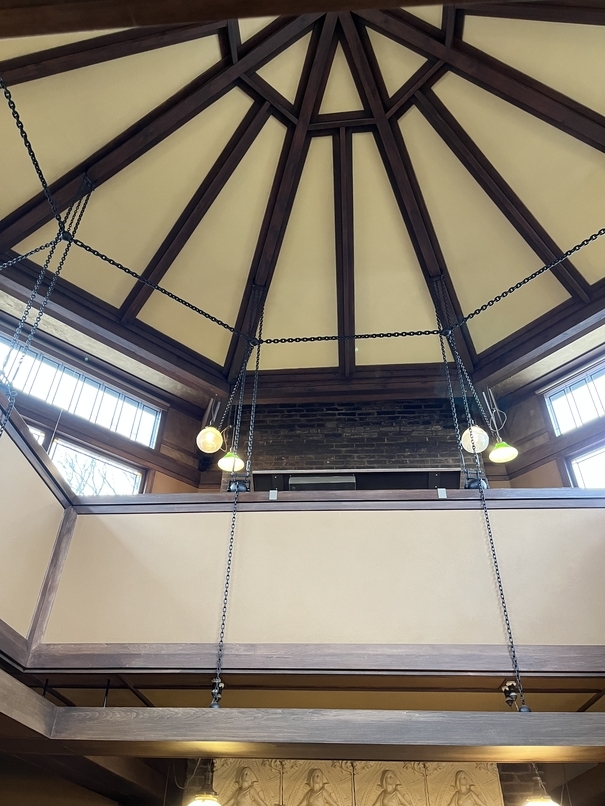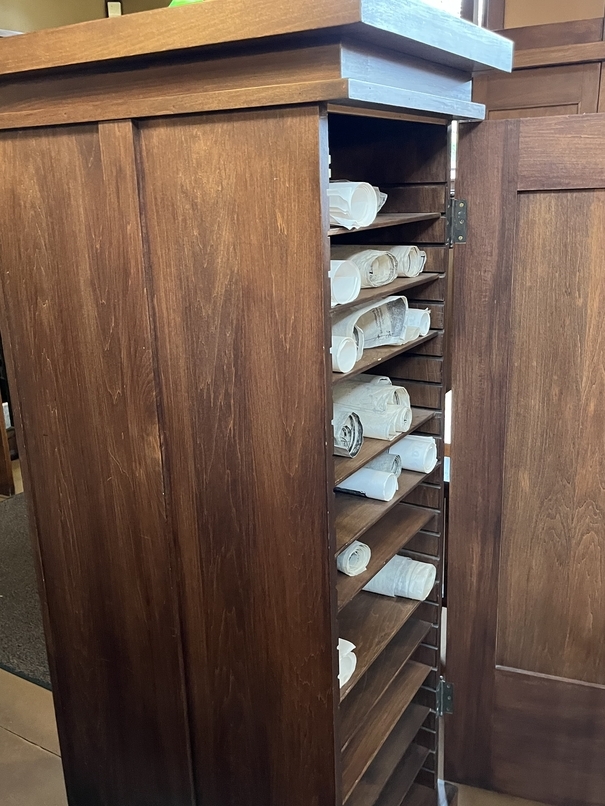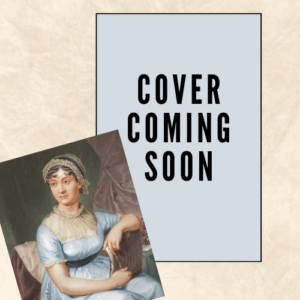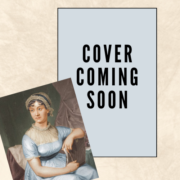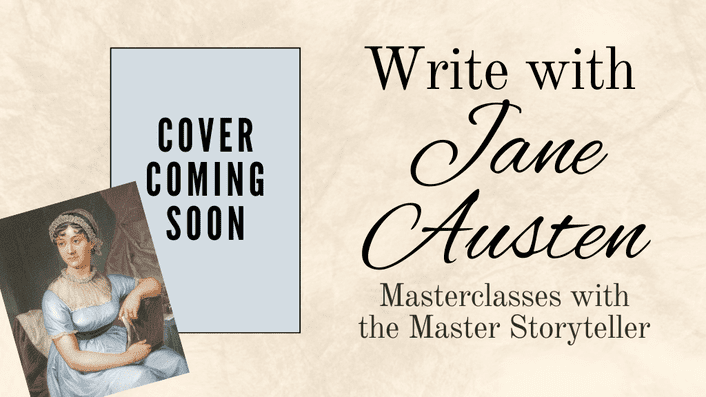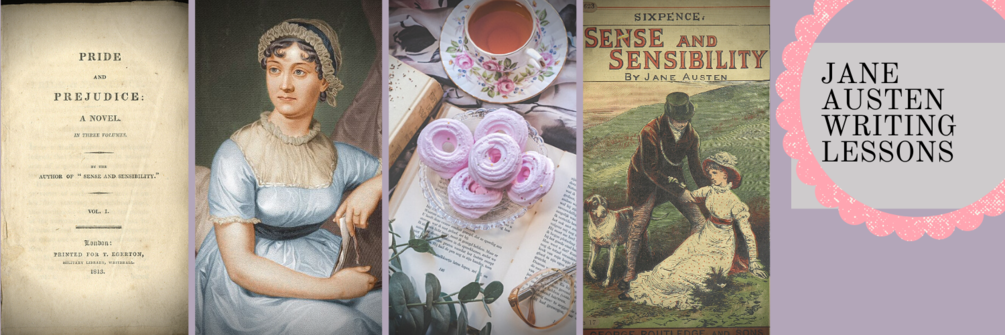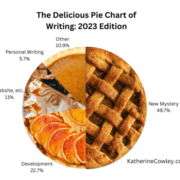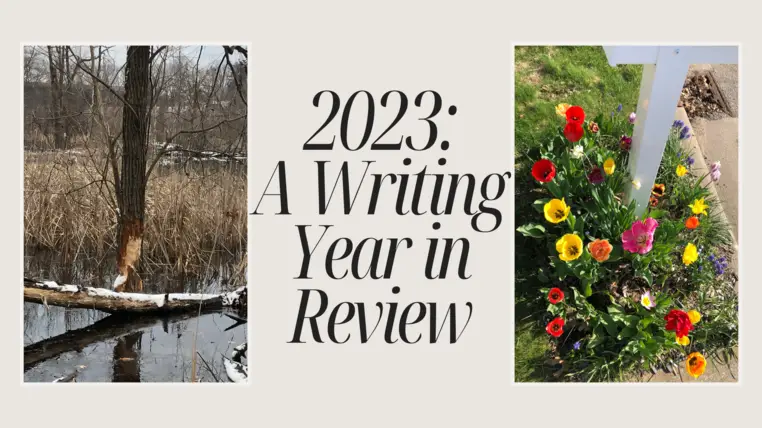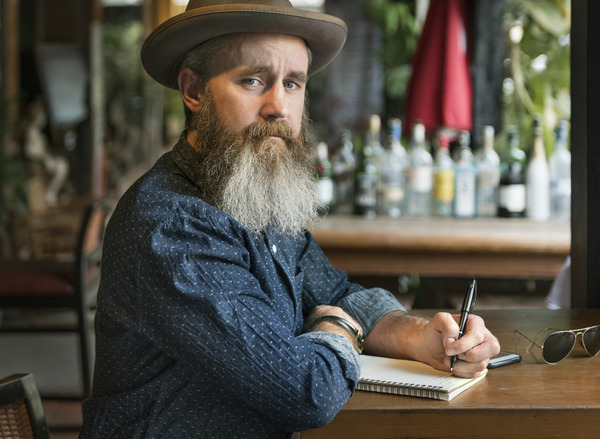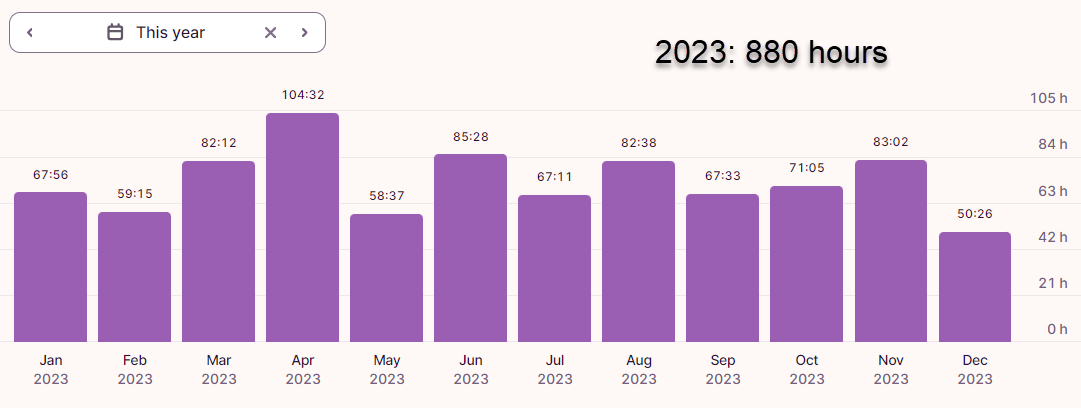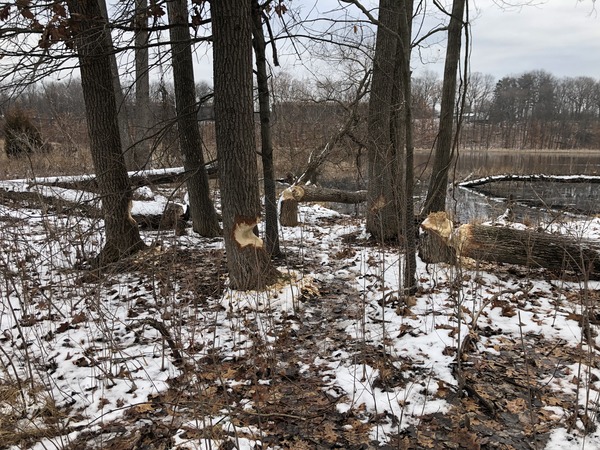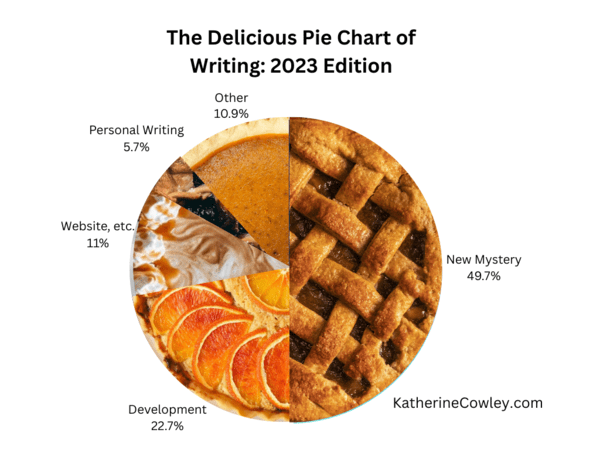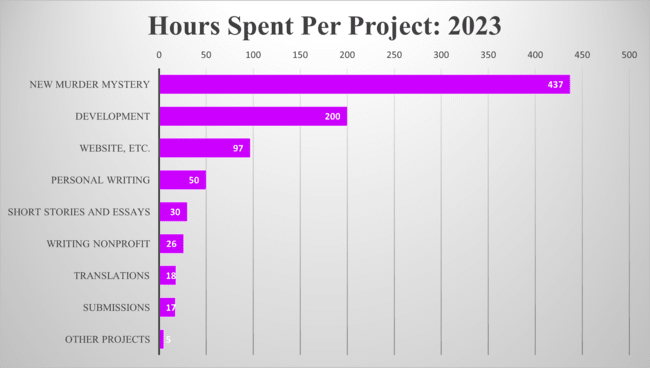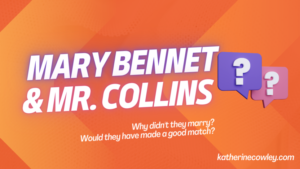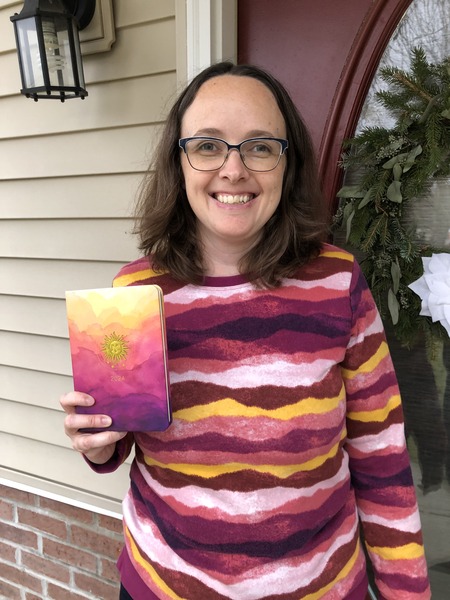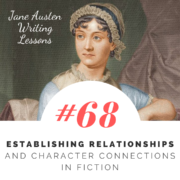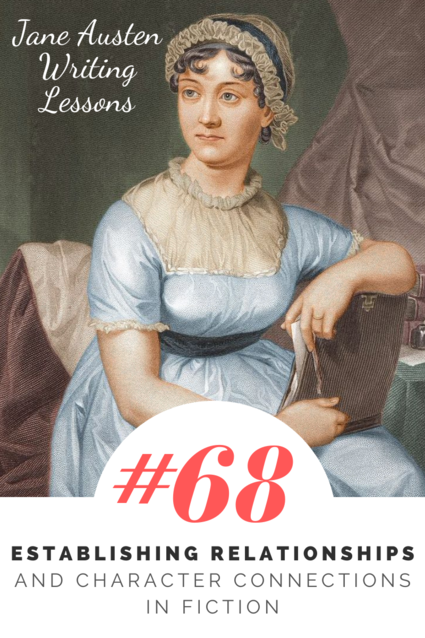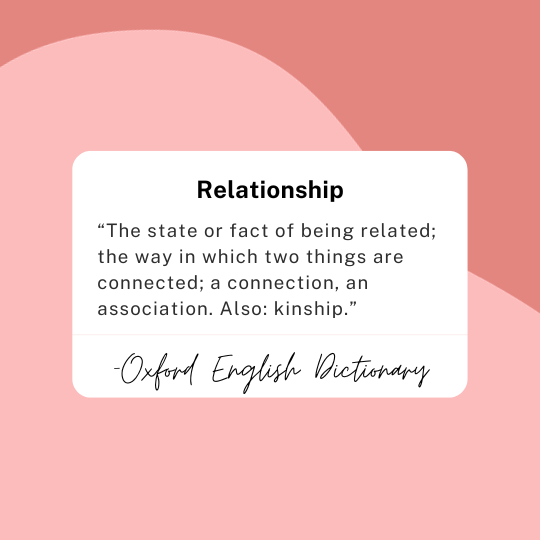Write with Jane Austen: Cover Reveal
Even if you’ve spent hundreds and hundreds of hours writing a book, the book always feels more real once you have a cover. That’s definitely the case for my upcoming nonfiction work, Write with Jane Austen: Masterclasses with the Master Storyteller.
I’m excited to show the cover for the book, but first, I wanted to tell you a little about the process, behind the scenes.
When my Mary Bennet book covers were being designed, the publisher had me fill out an “Art Fact Sheet” with information about the book. The head designer for the publisher then worked directly with the book’s cover designer. I received cover mockups (drafts, of a sort), and then I gave my feedback to the head designer, who conveyed it to the cover designer.
This time, the process was similar, but different.
Several months ago, I contacted a dream designer and asked if she would be willing to design the cover for my upcoming book.
She said yes.
Then, one of the first things we did was we got on a video call, and we looked at dozens of covers for nonfiction books related to Jane Austen, and nonfiction writing books. The designer asked for my thoughts on which covers I loved and why, and which ones didn’t work for me.
And then, she went to work. She designed three amazing covers, and I got to choose my favorite, which she then refined. And which you now get to see.
The cover reveal for Write with Jane Austen: Masterclasses with the Master Storyteller
Isn’t it gorgeous?
I love the floral wallpaper look, which bridges both Regency and modern styles. I love the font, I love the watercolor paper. I love the colors. Basically, I love everything about the cover, and I hope you like it too.
Here’s a digital rendering of what it will probably look like in 3D, on a physical book:
If you want to make sure to be the first to know when the project goes live, click the “Notify me on launch” button on the Kickstarter page. I really appreciate those who have already done so–publishing a book is always a little (or a lot) scary, and so your support and encouragement means a lot to me.
If you missed the original news about the book and want more details, here’s a blog post I wrote about it.
#69: The Jane Austen Approach to Critiquing Writing
Jane Austen’s Critique Group
I’ve been a member of critique groups for well over a decade, and sometimes I wonder what it would be like to be in a critique group with Jane Austen. We know that as a young writer, she frequently shared her drafts with family members and friends, entertaining them with her stories. We know she revised these pieces, and she surely made changes based off of their reactions and their questions.
As a published author, she, in turn, critiqued the writing of others. Her niece, Anna Austen Lefroy, loved to write and asked her aunt for feedback on her works. Between 1814 and 1816, Jane wrote a series of letters to Anna, giving entertaining, helpful, and at times difficult critiques.
One thing that stands out to me is that Jane Austen uses many of the same critiquing methods that I learned in graduate school, when I was studying best practices for teaching writing.
The Sandwich Critique Method: Good-Bad-Good
In Austen’s letters, she never just tells Anna what isn’t working: she also gives positive feedback.
In an undated letter, likely from the spring or early summer of 1814, Jane wrote to her niece:
MY DEAR ANNA,
I am very much obliged to you for sending your MS [manuscript]. It has entertained me extremely; all of us indeed. I read it aloud to your Grandmama and Aunt Cass., and we were all very much pleased. The spirit does not droop at all. Sir Thos., Lady Helen and St. Julian are very well done, and Cecilia continues to be interesting in spite of her being so amiable. It was very fit you should advance her age. I like the beginning of Devereux Forester very much, a great deal better than if he had been very good or very bad. A few verbal corrections are all that I felt tempted to make; the principal of them is a speech of St. Julian to Lady Helen, which you see I have presumed to alter. As Lady H. is Cecilia’s superior, it would not be correct to talk of her being introduced. It is Cecilia who must be introduced. And I do not like a lover speaking in the 3rd person; it is too much like the formal part of Lord Orville, and I think it not natural. If you think differently, however, you need not mind me. I am impatient for more, and only wait for a safe conveyance to return this book.
Yours affectionately, J. A.
This letter uses the classic sandwich technique for critiquing: start with the positive, then detail what could be improved, and then end with more positive. In other words, wrap what might be difficult to hear in between things that are working and positive encouragement.
Thus, Jane begins with “It has entertained me extremely” and ends with “I am impatient for more.”
At other times, Austen weaves the positive and the negative together. In a letter written on September 28th, 1814, Jane analyzes Anna’s characters, dissecting which ones are working and which ones need work:
We like the first chapter extremely, with only a little doubt whether Lady Helena is not almost too foolish. The matrimonial dialogue is very good certainly. I like Susan as well as ever, and begin now not to care at all about Cecilia; she may stay at Easton Court as long as she likes. Henry Mellish will be, I am afraid, too much in the common novel style,—a handsome, amiable, unexceptionable young man (such as do not much abound in real life), desperately in love and all in vain. But I have no business to judge him so early. Jane Egerton is a very natural, comprehensible girl, and the whole of her acquaintance with Susan and Susan’s letter to Cecilia are very pleasing and quite in character. But Miss Egerton does not entirely satisfy us. She is too formal and solemn, we think, in her advice to her brother not to fall in love; and it is hardly like a sensible woman,—it is putting it into his head. We should like a few hints from her better.
Jane paints a clear picture of strengths and weaknesses: some of the characters are “pleasing,” they feel natural and likeable, while other characters are cliché (“too much in the common novel style”) or “too formal and solemn.”
Writing exists with an audience in mind, and as a critiquer, you step in for the audience, sharing your reactions to the story, as well as your assumptions on how larger audiences will react. Thus, it’s useful for Jane to share both what is working and what is not working. Clearly we need to know what’s not working—it’s difficult to take a story from our heads and hearts and place it on a page, to convey that which want to convey. An audience reaction can let us know what needs to be improved. But we also need to know what is good about our writing—we need affirmation. In part, this is for self-esteem purposes, but more importantly we need to know what’s working well so we keep it in the story. Also, when we know that a technique is working well, we can emulate it in the rest of the story.
A modern scholar, William Hart-Davidson, recommends using a describe-evaluate-suggest model when giving a critique, and we see Austen using this very approach. She describes what she sees in a character, evaluates what she sees according to the goals of the story, and then, if needed, gives suggestions for improvement.
Thus, she describes the character of Henry Mellish as “a handsome, amiable, unexceptionable young man” and then evaluates the character according to her metric, feeling like a real person—she writes that he is a type that does “not much abound in real life.” The suggestion is implied—Anna should make him less “in the common novel style” and pull back on some of his characteristics.
Respecting the Storyteller
One of the other things I notice as I read Jane’s letters is the respect that she shows to Anna as a storyteller. Jane does not assume that she, the person giving feedback, knows better than the writer.
Thus, in the undated letter she writes:
I do not like a lover speaking in the 3rd person; it is too much like the formal part of Lord Orville, and I think it not natural. If you think differently, however, you need not mind me.
In a different letter, at the end of a rather critical paragraph, Austen writes:
Excuse the liberty I take in these suggestions.
Personally, if I were to receive a critique from Jane Austen, I’d probably apply every piece of feedback without question. But when Austen gives specific feedback, she is careful to frame it as a suggestion. Yes, she is a published author and her niece is not, but she knows that ultimately it’s Anna’s story. Anna can choose to apply the feedback if she wishes, but Jane does not want her to feel obligated to do so.
This is a healthy attitude to take when giving a critique: the goal is to help the writer revise and tell their own story in their own way, to the best of their abilities. It’s not to dominate or dictate, or to encourage that story that you would personally tell.
I’ve given a lot of feedback to authors, and I’m definitely gotten better at it over the years. I look back on a few early critiques I gave and cringe. I’ve also received a lot of invaluable feedback. I don’t use every suggestion, but I appreciate all those who have helped me improve my writing. I imagine that Jane Austen was also grateful for the support and feedback she received on her works.
In the next few weeks, I’ll share additional posts on what we can learn from Jane Austen about revision, including being aware of your audience as you revise. Meanwhile, I’m revising my upcoming Write with Jane Austen book, which will be launching in a few months on Kickstarter.
Don’t Miss Important Updates
Subscribe to the Write with Jane Austen newsletter receive new Jane Austen Writing Lessons in their email 1-2 weeks before they’re posted on my website. You can also get exclusive updates on the Write with Jane Austen book.
My regular newsletter contains more general information about my books, events, giveaways, and my reading recommendations.
The Year of the Pivot: 2024, A Writing Year in Review
It’s the final day of 2024, which means it’s time for my annual Writing Year in Review post—highlights, lowlights, charts, and insights into my writing process. And at the end of the post, there’s an announcement about a new book I have coming out next year!!!
First, let’s look at how many hours I spent writing in 2024:
(Note: I use Toggl to track my time—if you’d like to learn more, I wrote a post about how and why I use a time tracker for writing.)
As you can see, July was a rather low month at 22 hours—however, I did spend three weeks in Europe (I went to Paris for the first time, and I visited my parents in Vienna). The highest month was September, where I felt the back-to-school energy (despite not currently being a student/teacher). And the total for the year was:
711 hours writing
That’s fewer yearly hours than in recent years, but it’s been a tricky full year on many fronts, and it’s still a respectable showing.
And now, you ask, how did I spend my time?
Here’s a chart of how many hours I spent on each writing project over the course of the year:
A few insights into this chart:
Development – this is an umbrella I use to include critiquing other people’s writing, attending my writing group, participating in writing conferences, learning about writing craft, and networking.
Volunteer work – I’m on the board of directors for a writing nonprofit. It’s nice to do a little to give back to the writing community, and this year I guest edited the Holiday Lit Blitz.
Short stories – short stories are great to stretch my writing muscles, and some stories just belong in a short form. I also cheated this year and included a personal essay in this category, which leads to one of this year’s highlights:
A personal essay I wrote was nominated for a Pushcart Prize!

Teaching writing – I taught a two-week writing class for the Lifelong Learning program at Kellogg Community College, and it was delightful. I’ll be teaching a class in March about writing adaptations and retellings, so if you live in West Michigan, watch for when their Spring catalogue drops.
Regency mystery novel – I’ve played a little with a new novel, that will likely be one of my major focuses for 2025.
One thing that didn’t end up on this chart…I gave up my writing office. Due to a variety of circumstances, one of my kids needed it as a bedroom. As I moved out of the space and into the edge of a different room, I definitely felt the loss. It’s hard not to read into the symbolism of giving up your creative space.
However, I learned something new last week: when Frank Lloyd Wright lived in Oak Park, he gave up his architecture studio so his kids could have a bedroom. A few years later he ended up designing and building an incredible new studio. So I’m sure good writing spaces will again be in my future.
Me outside of the Frank Lloyd Wright house
A small part of Frank Lloyd Wright’s new studio in Oak Park
An architecture cabinet that’s also a partial column. Also, it can move.
And now, we come to the title of this blog post…
The Year of the Pivot
In the middle of 2024, I had a bit of a writing crisis. My family would argue that calling it “a bit of a crisis” is a gross understatement. My husband bought me a pot of succulents for my desk, which is a true indication of the gravity of the situation.
During the first half of the year, I spent 165 hours revising an 1870s mystery novel, bringing the three-year total for the book to 800 hours.
It’s doing a lot of cool things, but it’s a really tricky, complicated book. Due to a variety of factors, I realized that I needed to step away from the project. (As a note: I will be coming back to this book, but it may be a year or two before I figure out how to make it work. Fortunately, books are like soup—time stewing is almost always beneficial for enhancing the flavors and depth. I spent years thinking about The Secret Life of Miss Mary Bennet before writing it, and it really helped me figure out Mary’s character.)
Fortunately, about two weeks before I stepped away from the book, I had already decided on an Exciting New Book that I wanted to write/finish.
Pivoting was difficult, but it was also exhilarating. The new project—which for the moment, we’re still calling the Exciting New Book—brought me so much joy.
I ended up spending 213 hours on the Exciting New Book. And the book will actually be coming out in 2025.
It was a year of ups and downs, with lots of twists and turns, but it’s ending on a high note. Thanks for joining me on my writing journey, and Happy New Year!
And if you’d like a little more details, my new book is titled Write with Jane Austen: Masterclasses from the Master Storyteller.
And you can read more about this new book in this post:
New Book: Write with Jane Austen
2025 is Jane Austen’s 250th birthday, and to celebrate, I am releasing a book titled Write with Jane Austen: Masterclasses with the Master Storyteller.
A Description of the Book
It is a truth universally acknowledged that if a writer wishes to write well, she should learn from the very best of writers. In other words, she should study with Jane Austen.
Write with Jane Austen is the definitive guide on how to improve your writing. Its lessons and examples draw from Austen’s six published novels and from her unpublished works. This book will help you craft a character’s internal and external journeys, create effective antagonists and obstacles, construct compelling relationships, capture a setting without disrupting the forward movement of the narrative, improve your style, and compose dialogue which brings the characters and the story to life. Each chapter contains writing exercises which will help you internalize and apply these principles.
Whether you write romance, women’s fiction, historical fiction, mystery, or any other genre, this book will enable you to emulate Jane Austen’s proven techniques and improve your storytelling. This guide will also increase any reader’s appreciation for Austen’s craft.
Background on the Book
From 2020 to 2022, I wrote a blog titled Jane Austen Writing Lessons. For each post, I took a writing topic (for instance, writing sympathetic characters) and explored principles and techniques that could be learned from Jane Austen’s six published novels.
I had a fabulous time writing about sixty-five posts, and the blog was recognized by The Write Life as “one of the best websites for writers in 2021.” A number of readers and friends encouraged me to turn the blog into a book. I played with the idea, but I was working on other projects, so I never pursued it.
Fast forward to the summer of 2024. I realized that this coming year—2025—is Jane Austen’s 250th birthday. And I decided that this was the next project of my heart: to create a book on creative writing through the lens of Jane Austen’s works.
And so I went to work.
I didn’t want the book to read as a series of blog posts—I wanted beautiful chapter arcs. I ended up scrapping about 50,000 words from my blog. Delete. Delete. Delete.
There were also a number of new chapters and sections I wanted to write. And write I did. I added chapters on relationships, rising action, the climax, style, and more. The book is over 50% brand new material that never appeared on my blog, and the chapters taken from the blog have been heavily revised.
I still have a bit more editing to do, and then the book will be copy edited and proofread, but it won’t be long until I can send the book out into the world.
Crowdfunding Write with Jane Austen on Kickstarter
I am really excited to release Write with Jane Austen in an interactive way, through Kickstarter. Kickstarter is a crowdfunding website designed exclusively for creative projects. It has been used extensively by both new and established authors, including bestselling names like Brandon Sanderson.

I’m using Kickstarter because:
- It’s a great platform to run preorders for books.
- It’s interactive and exciting—I’ve personally backed 19 projects on Kickstarter, and as a reader, I love knowing that I can help bring a project to life. I also love the comments section (Kickstarter is the only place where it’s fun to read the comments!), the in-process updates from the creator, and the feeling of community.
- Running a Kickstarter will help cover the production costs for the book (i.e. cover, professional editing, etc.)
- Releasing a book on Kickstarter allows my loyal readers, friends, and fans to get a copy of the book months before it’s available to everyone else.
- Kickstarter allows me to offer other things in addition to the book—like writing workshops and a special edition workbook. (I will tell you more about these in the near future!)
The Kickstarter for the project will go live in March/April—to be the very first to know when it does, visit the book’s pre-launch page and click “Notify me on launch.”
Final Thoughts
I’m really excited to share this book with the world. Reading Jane Austen has changed my life for the better, and studying her craft in depth has transformed my writing. She truly is the master storyteller.
Don’t Miss Important Updates
To make sure you don’t miss important news and updates, sign up for one or both of my newsletters.
My regular newsletter contains information about my books, events, giveaways, and my reading recommendations. It will include some updates on the Write with Jane Austen book.
The Write with Jane Austen newslettter will include more updates on the book, exclusive tidbits, and mini-writing lessons to tide you over until the book is available.
2023, A Writing Year in Review: Bulbs and Beavers (and Pie!)
Last year, in 2022, I had two novels and two short stories published, wore fancy dresses and attended two awards ceremonies, ran a successful Kickstarter for a nonprofit, spent 937 hours writing, and had what is, for writing, a rather glamorous year.
This year was very different.
Above: Peak 2023 writing energy. Deposit photos says he is “hipster.” If I owned that hat, maybe I would be hipster too.
In 2023, I had no books published. I attended no award ceremonies. I spent 880 hours writing (which is lower than the amount spent in 2020, 2021, and 2022). I hit a point in the revisions process where my confidence (as a writer) decided to indulge in clichés and completely shatter, like a Corelle soup bowl on the kitchen floor, shards of glass scattering across two full rooms. (Corelle is made of tempered glass, so it’s not supposed to break easily, but in my house, we’ve broken at least four bowls and plates this year.)
Yet right now, as I look back on another year of writing, I feel good about 2023.
This year of writing was like planting bulbs in the fall with the hope that they’ll come up in the spring. Yes, despite the spicy hot pepper-based deer repellant, the deer might still eat all of them, but chances are, next year I’ll have tulips.
A picture of my tulips from this spring. Unlike in 2022, when the deer ate all my tulips a few days before they blossomed, in 2023 my tulips survived so they could act as a positive metaphor.
This year of writing was also like a beaver, gnawing on trees. There are lots of trees to gnaw on. There’s a lodge to maintain. There’s pesky, flowing water that must be stopped. Sometimes people put up metal netting so you can’t get to the best trees. Sometimes you take down a whole tree at once, but most of the time, that’s not possible. So you start on a few trees and make some progress, knowing that you’ll have time to do the rest later.
These are pictures that I took that show the efforts of the local beavers at the Asylum Lake Nature Preserve in Kalamazoo, Michigan. Every few months, I check on the beavers’ progress.
What trees did I gnaw on this year? Well, there’s a chart for that.
I love charts, I love pie, and I love writing. This collision of all three interests was meant to be.
And now, in classic bar graph form:
And, because I like writing, some written details for a few of the categories:
New Murder Mystery (437 hours)
These 437 hours are on top of the 227 hours I spent on this book last year, bringing the total up to 664. This is the most research-intensive, complicated, and challenging book I’ve written. It’s also been like making soup—the components have needed time to stew together, so the flavors develop properly.
Development (200 hours)
- Conferences: Malice Domestic and the Midwest Mystery Conference
- Critiquing and writing group
- Networking
- Writing craft and mystery genre research
- Accounting, taxes, and business stuff
- Planning and considering goals
Website, etc. (97 hours)
Website, newsletters, blog posts, and a few book events! My most popular blog post for the year was on Mary Bennet and Mr. Collins.
Submissions (17 hours)
Most of this time was spent applying to an art residency. I didn’t get selected, but I was on the short list, and now I have a very solid concept for a future book that I plan to write.
Looking to 2024
Me with my 2024 planner, which matches my sweater. Maybe I am hipster after all.
I often have a 2-year writing plan, with all my upcoming projects figured out. I don’t right now, and that’s both terrifying and liberating.
I do know that I’ll need to do more revisions on my current mystery novel. I want to write some short stories, and spend a few weeks focusing on reading and doing other things to refill my creative well. I suspect I will start a new book. Will that be a sequel to my current novel or to Mary Bennet? Or something entirely new? Only time will tell.
#68: Establishing Relationships and Character Connections in Fiction
This is the first post in a new series within Jane Austen Writing Lessons which will focus on relationships and character connections. A lot of times we think about relationships as romantic, and we will talk about that (after all, Austen has written some of my all-time favorite romantic relationships). But before we get to that point, we’re going to consider more general principles of establishing character relationships and connections.
In Jane Austen’s novel Emma, the very first spoken dialogue comes from Emma’s father, Mr. Woodhouse. He declares:
“Poor Miss Taylor!—I wish she were here again. What a pity it is that Mr. Weston ever thought of her!”
Miss Taylor is Emma’s former governess. She has recently married Mr. Weston, and as a result she no longer works for Mr. Woodhouse. Mr. Woodhouse is highly opposed to her loss. Emma attempts to convince her father that the marriage is a positive thing, beginning by saying, “I cannot agree with you, papa; you know I cannot.”
In these first few pages of Emma, the relationships and connections between characters begin to unfold:
Even in these first few pages, Jane Austen masterfully establishes the relationships between different sets of characters. Many of these relationships become driving factors in the novel, influencing plot and character, and adding meaning and consequence to the characters’ actions. Some of the relationships shift and change over the course of the novel, while others remain relatively static.
The first definition for the word relationship in the Oxford English Dictionary (OED) is as follows:
The state or fact of being related; the way in which two things are connected; a connection, an association. Also: kinship.
It’s only in definition 2b that the OED defines a relationship in an emotional or sexual way, so let’s linger on this first definition of relationship, in which two people are related or connected in some way.
The primary root for the word relationship is the word relation, which, according to the OED, began to be used in English in around 1398. A relation means there is a “connection, correspondence, or contrast between different things.” Examining the relation between two things means considering why they are associated or what connects them. A relation can also mean “the social interactions that occur and feelings that exist between two or more people or groups of people.”
As you write or revise your own fiction, it’s important to look at the relationships and connections between characters, both ones which involve your main character and relationships which only involve the supporting characters.
As I consider relationships in my own stories, I like to ask:
- What connects people?
- How do two characters know each other?
- How do they feel about each other? Why?
- How does one relationship affect other relationships in the story?
- Is the main character aware of the connections between other characters?
- How do the character relationships manifest on the page, in actions and behaviors?
- What events in the novel will cause shifts or changes in these relationships?
In the coming months, we’ll look more closely at how Jane Austen uses relationship arcs, builds webs of relations, and also constructs romantic relationships. But first, here are some writing exercises.
Exercise 1: Consider the first five to ten pages of your book. Make a list of each relationship that is established and what your reader knows about each relationship so far.
Exercise 2: Find a place that has a number of people and spend a few minutes people watching. If you see any relationships or connections between people, write them down. What sort of relationships do you think these people have? What clues help you understand these relationships?
Exercise 3: Write a scene about two characters who would be unlikely to have any sort of prior connection but do have some sort of relationship (i.e. a friendship, a past, same employer, etc.).


